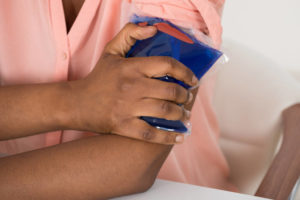 Accidents happen and injuries are not uncommon, especially for those who lead active lives. In the event of an injury, it’s always good to know what to do next. There are plenty of home remedies that can be used, but the most common are ice and heat. Depending on the scope of the injury, you would use one of the two. Both are useful, but which is best?
Accidents happen and injuries are not uncommon, especially for those who lead active lives. In the event of an injury, it’s always good to know what to do next. There are plenty of home remedies that can be used, but the most common are ice and heat. Depending on the scope of the injury, you would use one of the two. Both are useful, but which is best?
It’s actually not about which is best, but which is best for your specific issue. Ice, or cryotherapy, is usually used for new, or acute injuries. For example, if you sprained your ankle after coming down from that slam-dunk, it would be appropriate to apply ice.
Other reasons to use cryotherapy include strains, inflammation, muscle spasm, headaches, and pain relief. Heat, or thermotherapy, would be used on muscle soreness or to help heal chronic injuries. An example of this would be a condition like arthritis. Other reasons to use it include pre-stretching, relaxation, stress relief, joint pain and stiffness, and muscle stiffness.
So what is it that sets apart these two forms of therapy?
Well, in an acute injury, like the sprain mentioned earlier, a number of things happen in the body. Soft tissue in the ankle is damaged and blood vessels are broken. Once these blood vessels are broken, they will







